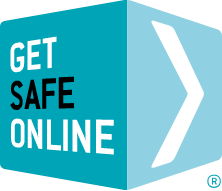Cyberstalkers can be either strangers or people you know (sometimes ex-partners), and there are many different motives. The more determined or obsessive stalkers become, the more likely they are to move from one online channel to another until your online presence is fully intruded upon. They commonly obtain their information about you via your online details of personal and financial affairs, relationships, social and work life and your location.
The risks
- Identity theft – having your credentials controlled
- Having your online accounts being taken over
- Having your contact details obtained and used
- Location and tracking of you by GPS on mobiles, tracker devices or spyware on phones
- Having false profiles posted on social networking and other sites
- Having malicious websites, blogs and social networking sites created about you
- Impersonation of you being used to stalk others, positioning you as the guilty party
- Being discredited in social media and other online communities
- Being discredited in your place of work
- Receiving direct threats through email/instant messaging
- Stalking or harassment of your relatives, friends or colleagues (on average a stalker will contact 21 people connected to the victim)
- Use of your image
- Others being provoked to attack you
- Escalation to physical violence
- The stalker taking over your online accounts
- Post-Traumatic Stress Disorder
Protect yourself against cyberstalking
- Review what online information exists about you and keep it to a minimum
- Regularly change your e-mail and passwords for key online accounts and keep them safe
- Review all your privacy and security settings
- Avoid public forums
- Ensure that your computer and mobile devices have updated antispyware software installed and turned on
- Ensure your wireless hub/router has security turned on.
- Unless you are using a secure web page, do not send or receive private information when using public WiFi
- Limit the personal and financial information you share on or offline
- Educate friends, family and work colleagues into the risks
If you are affected by cyberstalking
- Gather and document as much evidence as you can
- Report the stalking to the police
- Seek help and support from relevant organisations by searching ‘cyberstalking’ online
- Most social networking sites have a means of reporting such issues, for example Facebook, click here. Twitter also has an in-Tweet ‘Report Abuse’ button across all apps and its website
